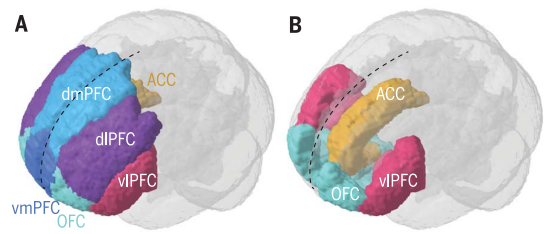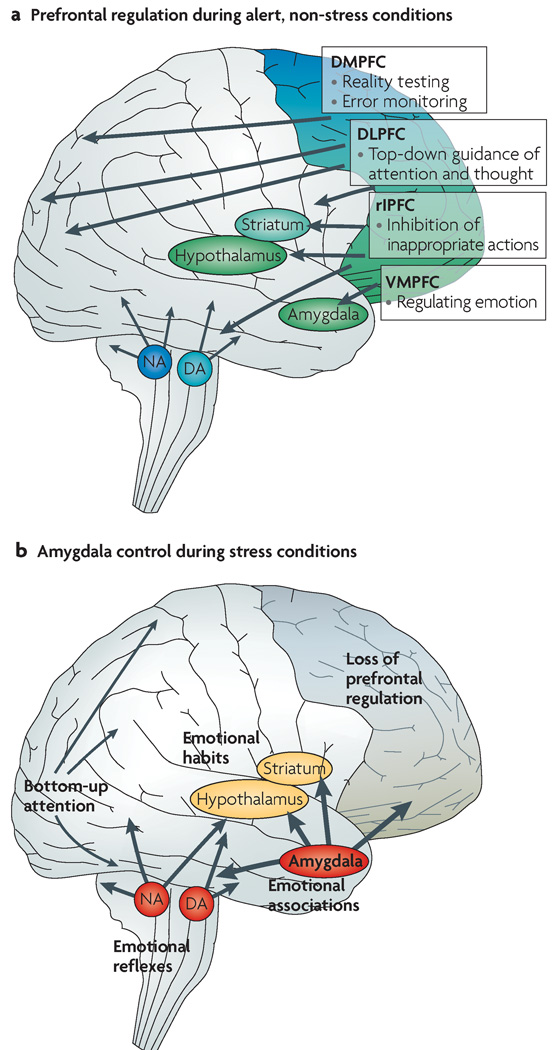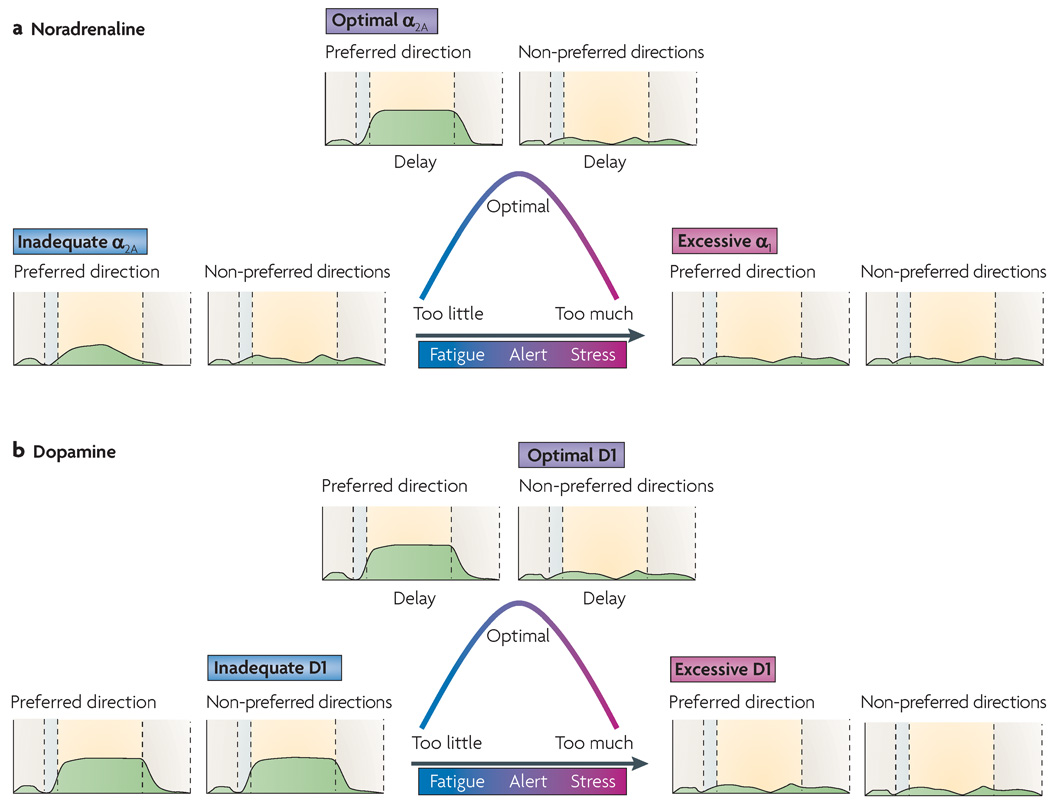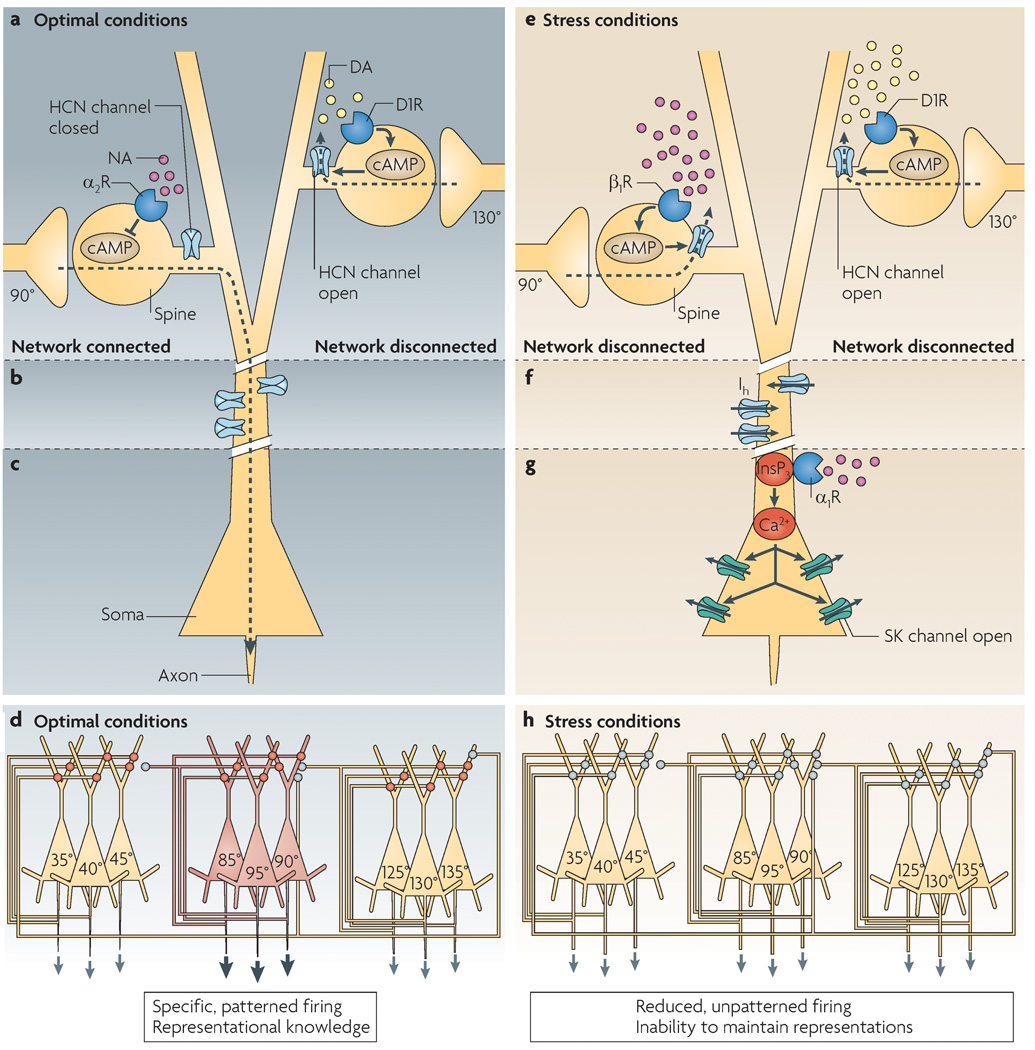Dorsolateral Prefrontal Cortex
2021-11-18 links: Neuroanatomy reference: https://beta.nootropicswiki.org/article/dlpfc-modulation
Dorsolateral Prefrontal Cortex
 #
#
- Dorsolateral Prefrontal Cortex Drives Mesolimbic Dopaminergic Regions to Initiate Motivated Behavior
- mGluR2 versus mGluR3 Metabotropic Glutamate Receptors in Primate Dorsolateral Prefrontal Cortex: Postsynaptic mGluR3 Strengthen Working Memory Networks (Jin, Arnsten et al. 2017)
-
Neuromodulation of Thought: Flexibilities and Vulnerabilities in Prefrontal Cortical Network Synapses (Arnsten et al. 2012)
-

- Dynamic network connectivity = neuromodulators rapidly and flexibly altering efficacy of synaptic connections (in the dlPFC III recurrent excitatory microcircuits, of course) without changing the architecture.
-
Dynamic Network Connectivity: A new form of neuroplasticity (Arnsten et al. 2010)
- neuromodulation plays an essential role in shaping the contents of our “mental sketch pad”, thus coordinating arousal state with cognitive state.
-
Cognitive deficit caused by regional depletion of dopamine in prefrontal cortex of rhesus monkey
- Depletion of catecholamines from the dlPFC was as detrimental as ablating the dlPFC itself!
-
Cognitive deficit caused by regional depletion of dopamine in prefrontal cortex of rhesus monkey
- neuromodulation plays an essential role in shaping the contents of our “mental sketch pad”, thus coordinating arousal state with cognitive state.
- Genetic insults to DNC proteins are commonly linked to Schizophrenia.
- Impairment of NMDA for sure
-
Dynamic Network Connectivity: A new form of neuroplasticity (Arnsten et al. 2010)
- Gives us a walkthrough on Goldman-Rakic’s findings from start to finish.
- dlPFC neurons can represent visual space in the absence of sensory stimulation, the foundation of abstract thought—beautifully put
- this basic representational operation is the building block of more complex dlPFC operations such as behavioral inhibition and cognitive control The prefrontal landscape: implications of functional architecture for understanding human mentation and the central executive (Goldman-Rakic 1996)
- Intrinsic circuit organization of the major layers and sublayers of the dorsolateral prefrontal cortex in the rhesus monkey Layer V also exhibits all this stuff, but to a lesser extent.
- It is likely that most Response cells reside in layer V, as they are selectively influenced by D2
- Layer V neurons bear the majority of mRNAs encoding the five distinct dopamine receptor subtypes in the primate prefrontal cortex
- dlPFC neurons can represent visual space in the absence of sensory stimulation, the foundation of abstract thought—beautifully put
- Ramón y Cajal: In mice the basal dendrites [of pyramidal cells] are short and have few branches, in man they [the basal dendrites] are numerous, long and highly branched……as one ascends the animal scale the psychic cell becomes larger and more complex; it’s natural to attribute this progressive morphological complexity, in part at least, to its progressive functional state
-
Patricia Goldman-Rakic A Remembrance (Arnsten 2003) and similar work of hers in realation to Goldman-Rakic. Arnsten has many
- Delay cells are usually spatially tuned, firing across the delay period for the neuron’s preferred direction, but decreasing firing for all other nonpreferred directions (the preferred direction for this Delay cell is indicated by a red asterisk). The microcircuits underlying Delay cell firing reside in deep layer III (and possibly in layer V as well) and are described in detail in the text. In contrast to Delay cells, Response cells are often inhibited during the delay period and instead fire leading up to, during, and/or after the motor response, initiating action and/or providing feedback. These neurons are thought to reside in layer V.
- Unlike other areas in the cortex where LTP/CREB induces rapid changes in dendritic morphology, layer III dlPFC neurons remain long and thin, even in very old monkeys.
- This geometric shape facilitates the rapid gating of synapses via ion channel opening, likely by limiting the spine’s volume and extending the distance that the signal must travel.
- E.g. something histological: The spine neck filters membrane potentials
- This geometric shape facilitates the rapid gating of synapses via ion channel opening, likely by limiting the spine’s volume and extending the distance that the signal must travel.
- even mild pressure can impair the ability to find insightful solutions to problems
A brain mechanism for facilitation of insight by positive affect
- *positive mood enhances insight, at least in part, by modulating attention and cognitive control mechanisms via ACC, perhaps enhancing sensitivity to detect non-prepotent solution candidates. *
- There is also endogenous catecholamine production in the dlPFC of some primate species, including humans
-
-
Stress signalling pathways that impair prefrontal cortex structure and function (Arnsten 2009)
- So the bad thing about Ca2+ in the dlPFC microcircuits is that it opens SK channels.
-

-

-

-
https://beta.nootropicswiki.org/article/dlpfc-modulation
- Under conditions of stress or depression, elevated activity in the cingulate cortices can activate the amygdala, and very high levels of catecholamine release in cortex takes higher PFC areas such as dlPFC “offline.” The effects of dopamine hyperactivation and hypersexual stimuli likely work via this same pathway too effect too